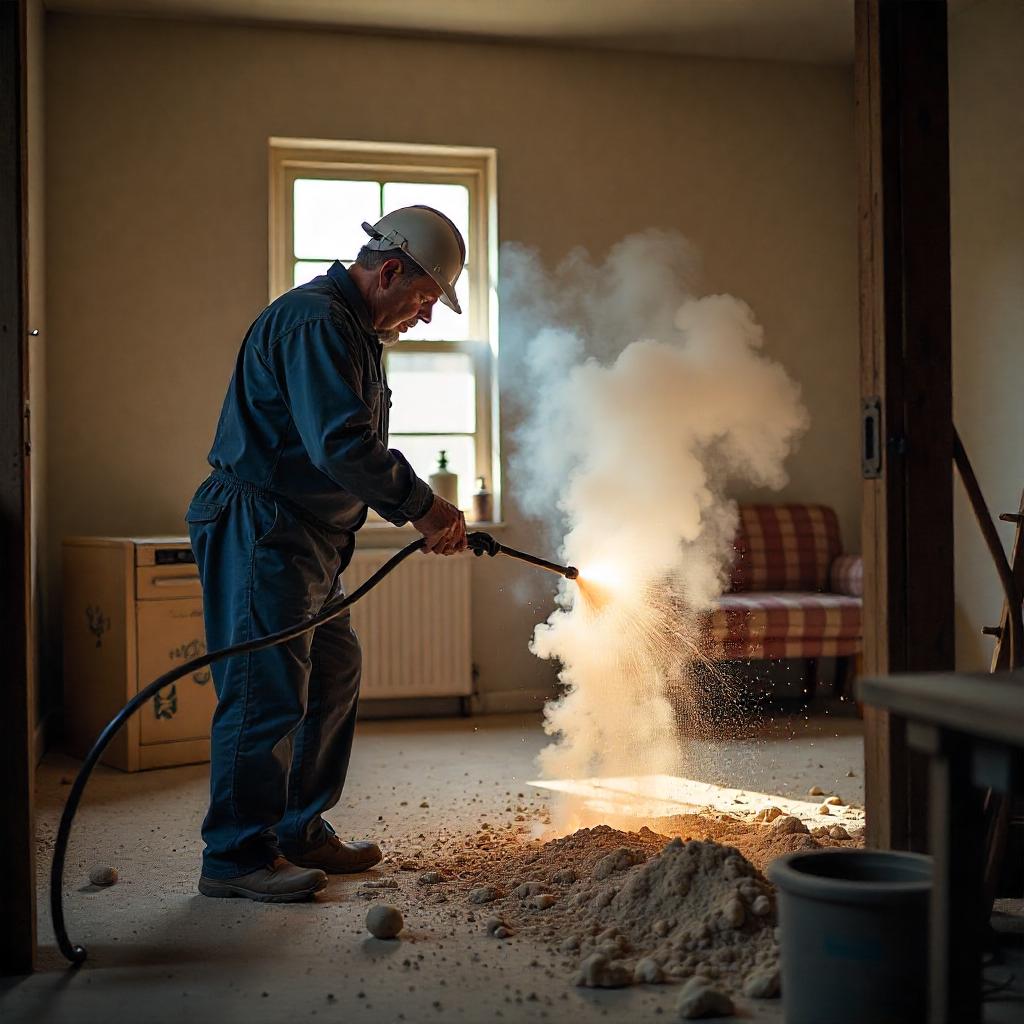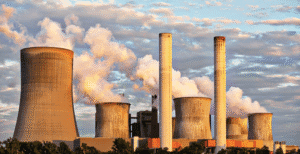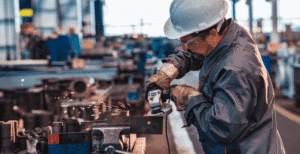Understanding Dust-Related Fire Hazards
Dust is everywhere. In homes and factories, it may seem harmless, but it can actually cause serious fires. When dust builds up, it can ignite under the right conditions. This can happen if there is a spark or a lot of heat nearby.
Understanding dust-related fire hazards is very important. Knowing how dust can lead to fires helps people stay safe. In homes, dust can collect on surfaces and in corners. In factories, it can gather near machines. Both places need regular cleaning to reduce the risk of fire.
People need to pay attention to dust. By knowing the dangers, they can take steps to prevent fires. Simple actions like cleaning often and storing materials safely can make a big difference. It helps keep everyone safe from dust-related fire hazards.
What Makes Dust Combustible?
Dust becomes combustible due to several important factors. Understanding these factors helps to explain why some materials can be dangerous when they turn into dust.
- Particle Size: Smaller dust particles have a larger surface area. This means they can catch fire more easily. Tiny particles can ignite quickly and burn fast.
- Concentration: Dust must be in the right amount to become combustible. If there is too little dust, it may not burn. If there is too much, it can create an explosion. The right concentration is key.
- Ignition Source: An ignition source is something that starts a fire. This could be a spark, heat, or flame. If dust is near an ignition source, it can catch fire.
Certain materials become explosive when they are in dust form. Here are some examples:
- Wood: When wood is ground into fine dust, it can ignite quickly. This is why sawdust can be dangerous.
- Flour: Flour dust can create a cloud. If this cloud meets a spark, it can explode.
- Sugar: Like flour, sugar can also become dust. Sugar dust can catch fire when it is in the air.
- Metals: Some metals, like aluminum or magnesium, can also become dangerous dust. When these metals are in dust form, they can ignite and cause explosions.
Understanding these factors helps people work safely with materials that can create combustible dust.
The Dust Explosion Pentagon: Conditions Required for a Dust Explosion
The Dust Explosion Pentagon shows the five elements necessary for a dust explosion. These elements are fuel, oxygen, dispersion, confinement, and an ignition source. Each element plays an important role in creating an explosion. If one element is missing, an explosion cannot happen.
| Element | Description |
| Fuel | This is the combustible dust that can catch fire. |
| Oxygen | This is the air that supports burning. |
| Dispersion | This means the dust must be spread out in the air. |
| Confinement | This is when the dust is in a space that limits it. |
| Ignition Source | This is what starts the fire, like a spark. |
Fuel is the first element. It is the dust that can burn. Without combustible dust, there is nothing to burn, so an explosion cannot occur. Oxygen is the second element. It is the air around us. If there is not enough oxygen, the fire cannot grow. Dispersion is the third element. Dust must be mixed in the air. If the dust is not spread out, it cannot ignite easily. Confinement is the fourth element. This means the dust must be in a place where it cannot escape. If there is no confinement, the dust will not build up enough to explode. Finally, the ignition source is the fifth element. This is what starts the fire. Without a spark or flame, the dust will not catch fire.
Each element is important. If any one of these five elements is missing, a dust explosion cannot happen.
Real-World Examples of Dust-Related Fires and Explosions
Real-world examples of dust-related fires and explosions show the dangers of dust in certain environments. These incidents often lead to severe consequences. Here are some significant case studies:
- The 2008 Imperial Sugar Company explosion in Georgia, USA, is a tragic example. This explosion killed 14 people and injured 36 others. The dust from sugar stored in the facility ignited, creating a massive fireball. The explosion destroyed parts of the plant and caused significant damage around it.
- The 2010 dust explosion at the Kleen Energy plant in Connecticut is another serious case. This incident involved natural gas and metal dust. The explosion killed six workers and injured many more. Investigators found that dust from the plant’s operations was a major factor in the blast.
- The 1977 Hawkins Chemical explosion in North Carolina also highlights the dangers of dust. The explosion killed 1 person and injured 14 others. Dust from chemicals in the facility mixed with other materials and ignited. This incident showed how even small amounts of dust can cause huge problems.
- The 2001 explosion at the Massachusetts-based W.R. Grace plant is another important example. This explosion injured 6 workers and caused significant property damage. The dust from the materials being processed built up and eventually ignited.
These examples illustrate how dangerous dust can be in various industries. They remind everyone of the importance of safety measures to prevent dust-related fires and explosions.
Industries at Risk: Where Dust Fires Are Most Common
Dust fires can happen in many industries. Each industry has its own risks. Here are some industries that face dust-related fire hazards.
- Woodworking: The woodworking industry is prone to dust fires. Wood dust is very fine and can easily ignite. When machines cut wood, they create dust. If this dust builds up, it can catch fire. A spark from a machine can start a big fire quickly. Workers in this industry need to keep areas clean and use vacuum systems to reduce dust.
- Food Processing: The food processing industry also has risks from dust fires. Flour and sugar can create dust clouds. These clouds can explode if they come into contact with a spark or flame. Equipment used in food processing can sometimes cause sparks. This is why it is important to maintain clean workspaces and use proper safety measures.
- Metalworking: In the metalworking industry, dust fires are common too. Metal dust can come from grinding or cutting metal. This dust is very fine and can catch fire easily. If the dust is not cleaned up, it can create a dangerous situation. Workers must follow safety protocols to manage dust and prevent fires.
- Agriculture: The agriculture industry faces dust fire risks as well. Dust from grains, hay, and other materials can build up in storage areas. When this dust is disturbed, it can ignite. Farmers must be careful when handling materials to avoid creating sparks. Keeping storage areas clean can help reduce the risk of fire.
Preventative Measures to Mitigate Dust Fire Risks
Preventative measures to mitigate dust fire risks are very important in keeping places safe. Dust can build up and cause fires if not managed well. Here are some strategies to prevent dust-related fires:
- Regular cleaning: Clean areas often to stop dust from building up. Dust should be removed from floors, machines, and surfaces.
- Proper ventilation: Make sure there is good airflow in the area. Open windows or use fans to keep air moving and reduce dust levels.
- Using dust collection systems: Install systems that collect dust at the source. These systems trap dust before it can spread and cause problems.
- Employee training on dust hazard awareness: Train workers to understand the risks of dust. They should know how to recognize dust hazards and how to handle them safely.
By following these steps, workplaces can lower the risk of dust fires and keep everyone safe.
The Role of Air Filtration in Preventing Dust Fires
Air filtration systems play a key role in preventing dust fires. These systems work by capturing airborne dust particles. When dust builds up in the air, it can create a fire hazard. Effective air filtration helps reduce this risk. By filtering out dust, these systems keep the environment safer.
Intensiv-Filter Himenviro is a global leader in industrial filtration solutions. They offer advanced air filtration systems that are designed to capture even the smallest dust particles. Their products help companies stay safe from dust fires. Intensiv-Filter Himenviro also cares about the environment. They follow strict environmental regulations. This shows their commitment to sustainability.
Overview of Intensiv-Filter Himenviro’s Services:
- Industrial air filtration systems
- Dust collection solutions
- Compliance with environmental laws
- Support for sustainable practices
By using air filtration systems from Intensiv-Filter Himenviro, businesses can protect themselves from dust fires and contribute to a cleaner environment.
Conclusion: Ensuring Safety Through Awareness and Action
Dust is a fire hazard. It can build up in places and easily catch fire if it gets too hot or if there is a spark. People must recognize this danger. They should implement safety measures to reduce the risk of fire. Keeping areas clean and dust-free can help prevent fires. It is important to check surroundings regularly for dust build-up.
Taking action is essential. Readers should assess their environments. They should look for areas where dust might collect, like in corners or on shelves. Using a vacuum or a damp cloth can help remove dust. Having a regular cleaning schedule can also keep dust levels low.
Being aware of dust as a fire hazard is key to safety. Everyone can play a part in reducing risks. Readers should evaluate their own dust management practices. They should take steps to keep their spaces safe from fire hazards.



